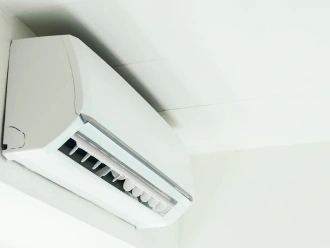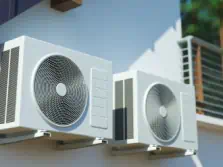Mitsubishi Electric vs Daikin: Which Heating Split System Should You Choose?
Mitsubishi Electric and Daikin lead Australia’s split system market.
Coldflow compares their technologies, features and finds which brand gives Melbourne homes the edge in comfort, efficiency and air quality.
Brand & Technology Overview
| Aspect | Mitsubishi Electric | Daikin |
|---|---|---|
| Compressor Tech | High efficiency inverter | Variable speed inverter |
| Refrigerant | R32 eco friendly | R32 / R410A options |
| Heat Exchanger | Alloy tube & fin design | Coated Blue Fin anti corrosive |
| Noise Performance | Indoor as low as 19 dB(A) | Indoor as low as 21 dB(A) |
| Smart Features | Wi Fi module accessory | Built in Wi Fi & app control |
Performance Metrics
- Seasonal COP (Heating): 4.0 to 4.8 for both brands.
- SEER (Cooling): 6.5 to 8.0 depending on model.
- Operating Range: Mitsubishi down to –15C; Daikin to –10C.
Feature Comparison
| Feature | Mitsubishi Zena | Daikin Alira / Stylish |
|---|---|---|
| Air Filtration | Plasma Quad Plus | Streamer Air Purifying |
| Auto Restart After Power | Yes | Yes |
| Quiet Mode | 18 dB(A) whisper | 20 dB(A) whisper |
| Smart Home Integration | Alexa, Google via module | Built in Google & HomeKit¹ |
Cost & Warranty
- Entry Price: Mitsubishi typically $200 to $300 less per head.
- Warranty: Both offer 5 years parts & labour; Daikin extends to 7 years on some models.
Energy Efficiency & Running Costs
- Both brands use inverter compressors and R32 refrigerant, delivering high star ratings and lower global-warming potential than older R410A systems.
- Daikin promotes “industry-leading” efficiency in the Alira X, particularly in smaller 2.5–3.5 kW sizes
- Mitsubishi Electric’s MSZ-AP series pairs its efficient compressor with an intelligent weekly timer, helping households shave standby costs
Take-away: For pure efficiency at light-to-medium loads, Daikin edges ahead; at larger capacities (5–7 kW) the gap narrows.
Customer Matching
- Budget Focus: Mitsubishi MSZ AP series.
- Air Quality Priority: Daikin Alira X with advanced streamer tech.
- Feature Rich: Daikin Stylish or Mitsubishi Zena for smart control.
Conclusion
Both brands deliver top tier performance; choosing comes down to feature preferences, budget and design.
Coldflow installs both and offers impartial advice.
View Air Conditioning Articles








 Dealer Only Brands: Daikin, Breezair, etc.
Dealer Only Brands: Daikin, Breezair, etc.
